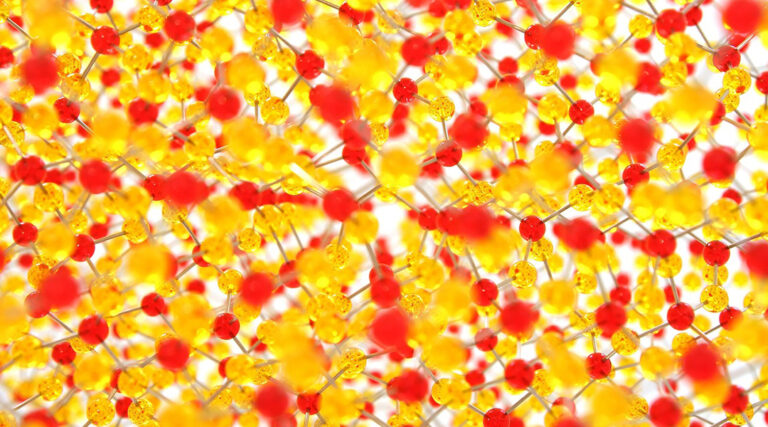Machine learning unveils the ideal structure of a quantum memristor, which could one day surpass current computing systems.
Scientists are increasingly turning to the unique properties of quantum mechanics to create technologies with unprecedented levels of performance, security, and energy efficiency.
The latest in this exploratory area of research are quantum memristors, which promise orders of magnitude lower power consumption than conventional computer memory if they can be implemented in real-world systems.
“Quantum memristors are devices designed to mimic the memristive properties of classical memristors but with a quantum twist,” said Carlos Hernani-Morales, a researcher at Universitat de València in Spain, in an email.
“Memristors are the fourth basic circuit element [along with capacitors, resistors, and inductors], proposed by Leon Chua in 1971 and experimentally implemented by HP Labs in 2008,” he continued. “Memristors have a variable resistance that depends on the current or voltage applied flowing through it and the ability to retain the last value of the resistance, thus [acting as a memory device].”
One area where quantum memristors could excel is neuromorphic computing, which aims to create devices that function similarly to the human brain, where neurons learn by reconfiguring the strength of the connections between them, called synapses.
“Neurmorphic computing is a brain-inspired approach to computing,” explained Hernani-Morales. “And one area that would stand to benefit from the advancement of a quantum memristor tech as these systems rely on memristors’ ability to retain information without needing a constant power supply, mirroring the properties of neurons in the human brain.”
What’s the hold up?
Despite their potential, scientists have yet to develop a functional device. “While quantum memristors show promise, right now, as with a lot of quantum computing-related technologies, there is no clear advantage of using them instead of the classical counterpart [because the technology is still underdeveloped],” said Hernani-Morales.
Implementing quantum memristors has been challenging due to several complex factors. Quantum systems are highly sensitive to environmental noise, causing instability, which makes maintaining quantum coherence — the property that allows particles, such as electrons or photons, to exist in multiple states at the same time and maintain a fixed relationship between these states — difficult.
Additionally, the precise control of quantum states, such as superposition and entanglement, requires sophisticated equipment and techniques, and finding suitable materials that support quantum properties while exhibiting memristive behavior has been challenging.
Machine learning helps bridge the gap
But instead of the usual trial and error approach, Hernani-Morales and his team sought to apply machine learning to provide a glimpse into what could be possible. “We [studied] the use of machine learning models to find the optimal set of parameters which maximizes the memristive behavior of a single quantum memristor and a system composed of two-coupled [quantum memristors],” they wrote in their paper published in Advanced Quantum Technologies.
The team specifically examined a type of quantum memristor that consists of ordinary electronic components combined with a superconducting current loop, which leverages quantum mechanical effects, like flux quantization and the Josephson effect, to store and process information in ways that classical memristors cannot.
By adjusting different parameters of the memristor, including the magnetic field affecting the current loop, the machine learning algorithm identified the optimal memristor structure, nearly reaching the theoretical maximum memory capacity.
They also explored the simplest of systems consisting of only two entangled memristors. Entanglement of memristors refers to a quantum phenomenon where the states of multiple memristors become correlated in such a way that the state of one memristor cannot be described independently of the state of the other, leading to enhanced memristive properties, such as improved memory retention or more efficient information processing.
“We found that in the optimal case, there is strong evidence that supports the connection between quantum correlations and the memristive behavior,” they wrote, reinforcing existing knowledge or providing further confirmation of theoretical predictions.
This will also help to characterize quantum memristive devices in future, bringing scientists one step closer to implementable and useful neuromorphic quantum computing.
The very long road to real quantum memristors
Although these findings have provided important insights into the ideal structure of a working quantum memristor capable of surpassing current computing systems, more work still needs to be done before practical implementation.
The team also focused solely on a system comprising two quantum memristors, leaving questions about the feasibility and potential benefits of entangling larger numbers unanswered.
Moreover, the theoretical analysis did not address methods for sustaining memristors in an entangled state, overlooking a significant challenge in quantum computing, where maintaining qubit entanglement can be fleeting due to environmental influences — current qubits can only be effectively maintained in an entangled for fractions of a second.
Addressing these challenges will not be easy, but they could pave the way for the development of highly efficient and powerful quantum computing systems harnessing the unique capabilities of entangled memristors.
Written by Andrey Feldman and Victoria Corless
Reference: Carlos Hernani-Morales et al, Machine Learning for Maximizing the Memristivity of Single and Coupled Quantum Memristors, Advanced Quantum Technologies (2024). DOI: 10.1002/qute.202300294
Feature image credit: BirdVisual on Pixabay














+ There are no comments
Add yours